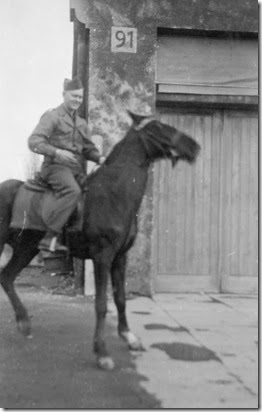Several people have asked me about a quote I used recently in an essay about the importance of dealing with ambiguity, but to a person each of them rearranged the quote.
The quote from a blog post by Seth Godin earlier this month was that “culture creates reality.” These readers remembered it as “culture is reality.” There is a big difference.
It may be a take off on “perception is reality,” a phrase made popular by the late Lee Atwater in 1989 during the Presidential campaign of the first President Bush.
However, a more likely source is a book I was assigned in college in 1971 that had been written a few years before, just as I graduated from high school.
It is entitled The Social Construction of Reality: A Treatise in the Sociology of Knowledge by Dr. Peter L. Berger and Dr. Thomas Luckmann.
However, the bumper sticker versions used cynically by political operatives and repurposed in a more thoughtful way by Godin are both effective summaries.
It is easy to attribute this to intermediaries such as the traditional news media, but in reality it comes from human nature. We tend to be drawn to tidy narratives but these very narratives often blind us to the complexity of actual solutions, making lessons learned difficult to replicate.
An example is WWII. There were allied countries and axis countries and neutrals such as Switzerland and Sweden, right? And the neutrals were really on the side of the good guys right? That is the tidied narrative, but reality was more messy.
For example, 167 United States bomber crews diverted to Switzerland during the war, most too damaged to make it back to bases in England or North Africa.
A few of the crews were rumored to have deserted and taken their plane to Switzerland intentionally but this was labeled German propoganda.
A total of 1,516 American airmen were placed by the Swiss in interment camps under severe conditions. Some tried to escape and were among the 4,000 airmen rescued by an underground coordinated from the US diplomatic attaché office in Switzerland where a few were also involved in espionage.
Some of the airmen were recaptured by the Swiss and put on trial. Some of the internment camps were run by NAZI sympathizers such one near Wauwilermoos located roughly midway between Lucerne and Basel where the border of Switzerland meets that of France and Germany.
An excellent thesis on this was written by Dwight Mears at the University of North Carolina at Chapel Hill in 2011. Other records reveal that as Allied forces neared the border of Switzerland while sweeping toward southern German, Allied bomber crews “mistakenly” dropped 5,000 bombs or a total of 165 to 185 tons on nearly 100 Swiss villages.
Even several Swiss fighter planes were shot down.
At the end of the war, troopers from the United States 35th Tank Battalion were dismounted as the 35th Constabulary to keep order around notorious liberated areas such as Dachau where war crime tribunals began later in 1945.
Some tankers, like my father, who was ironically a rancher by trade, were remounted on horseback (shown in image above,) in Jeeps and in small planes, to constantly search the Alpienne border between Bavaria and Austria and Switzerland to intercept NAZIs attempting to escape.
Today we would say “seal the border” but after the war in Afghanistan we know that term is figurative. In fact, the U.S. Army was no more prepared with an exit strategy in WWII than we were in Iraq.
Soldiers in units such as my dads also processed bomber crews being released from internment in Switzerland who had horror stories of treatment in a neutral country just as the Russians did being returned home after being liberated from Dachau, to hear him tell it, against their will.
For liberators, it had to be a time of very mixed feelings and confusing narratives.
As my dad and some friends drove from Basel up to Mt. Arosa and St. Mortiz to ski on a few days leave, he would have sensed the tension among many in the land of his Swiss Amish ancestors. For innocents who have been victimized during a war, no amount of narrative cleansing can compensate.
In 1968, when I spent a few months around Lyon, France, the war had been over for two decades, but memories were still fresh there of bombs that were dropped off target, killing more than 1,000 people.
As Godin notes in his post – “The media isn’t the one that needs a narrative…we do. … All this myth-making reminds us just how strongly wired we are to believe in things that both make sense and feel right. They feel right because of who told us, and when.”
He’s right, “culture creates reality” but unfortunately it so often blinds us to the real story.
No comments:
Post a Comment